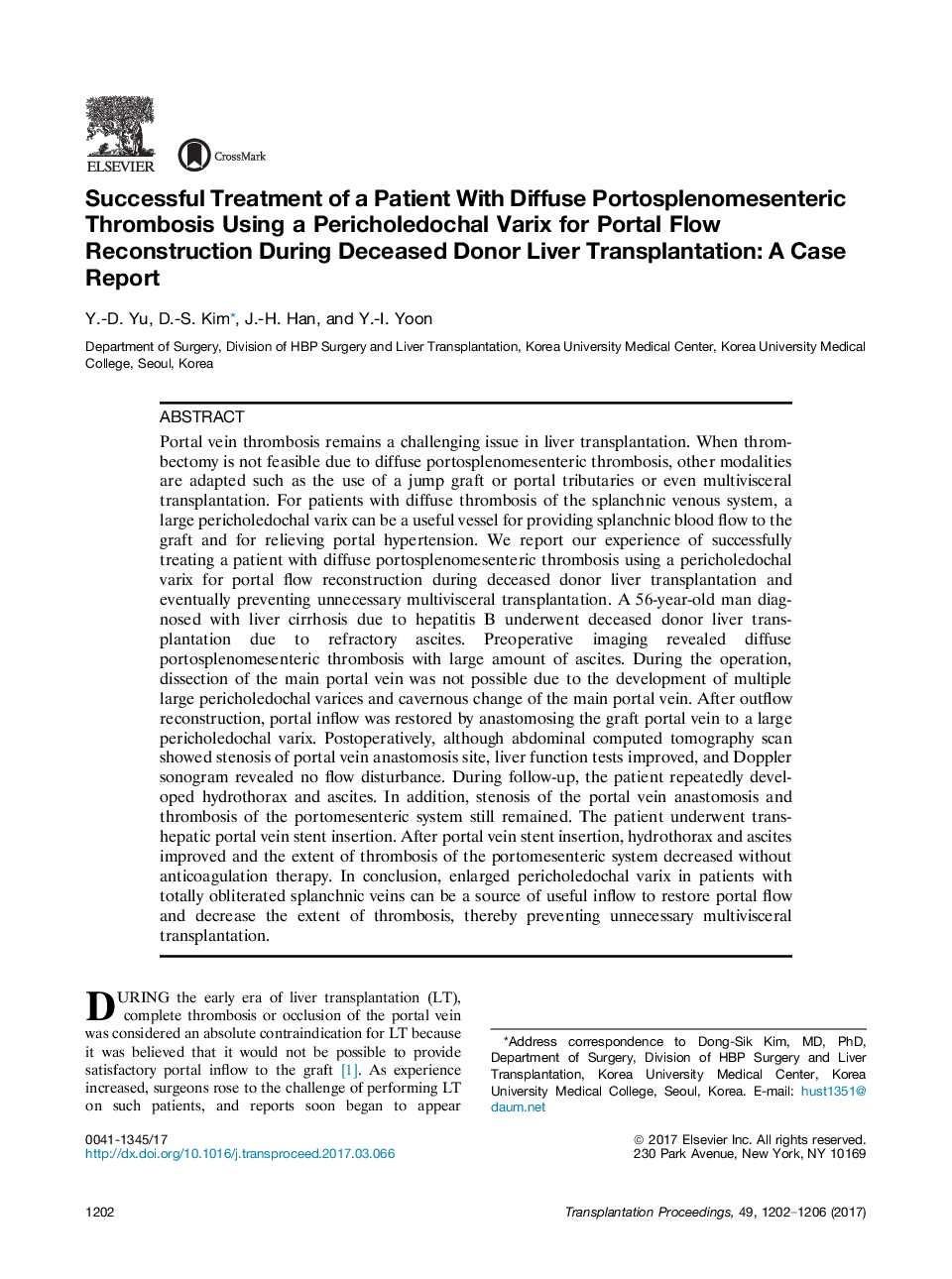| Article ID | Journal | Published Year | Pages | File Type |
|---|---|---|---|---|
| 5728830 | Transplantation Proceedings | 2017 | 5 Pages |
Portal vein thrombosis remains a challenging issue in liver transplantation. When thrombectomy is not feasible due to diffuse portosplenomesenteric thrombosis, other modalities are adapted such as the use of a jump graft or portal tributaries or even multivisceral transplantation. For patients with diffuse thrombosis of the splanchnic venous system, a large pericholedochal varix can be a useful vessel for providing splanchnic blood flow to the graft and for relieving portal hypertension. We report our experience of successfully treating a patient with diffuse portosplenomesenteric thrombosis using a pericholedochal varix for portal flow reconstruction during deceased donor liver transplantation and eventually preventing unnecessary multivisceral transplantation. A 56-year-old man diagnosed with liver cirrhosis due to hepatitis B underwent deceased donor liver transplantation due to refractory ascites. Preoperative imaging revealed diffuse portosplenomesenteric thrombosis with large amount of ascites. During the operation, dissection of the main portal vein was not possible due to the development of multiple large pericholedochal varices and cavernous change of the main portal vein. After outflow reconstruction, portal inflow was restored by anastomosing the graft portal vein to a large pericholedochal varix. Postoperatively, although abdominal computed tomography scan showed stenosis of portal vein anastomosis site, liver function tests improved, and Doppler sonogram revealed no flow disturbance. During follow-up, the patient repeatedly developed hydrothorax and ascites. In addition, stenosis of the portal vein anastomosis and thrombosis of the portomesenteric system still remained. The patient underwent transhepatic portal vein stent insertion. After portal vein stent insertion, hydrothorax and ascites improved and the extent of thrombosis of the portomesenteric system decreased without anticoagulation therapy. In conclusion, enlarged pericholedochal varix in patients with totally obliterated splanchnic veins can be a source of useful inflow to restore portal flow and decrease the extent of thrombosis, thereby preventing unnecessary multivisceral transplantation.
